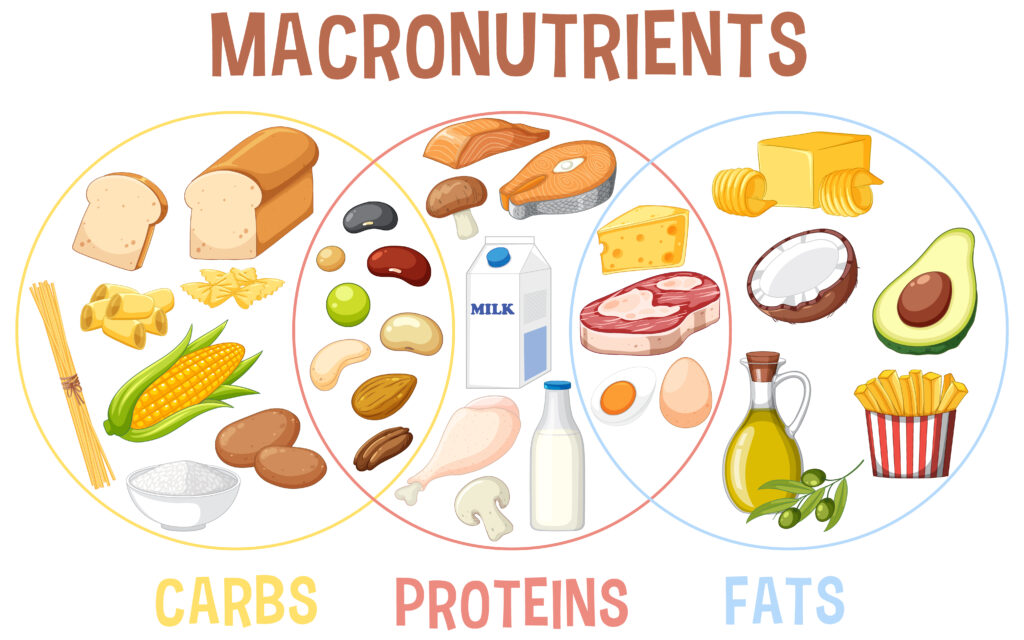The 90 30 50 Diet Plan has emerged as a beacon of hope for those navigating the complex world of weight loss and healthy living. Unlike traditional diets that often involve strict restrictions, this innovative approach promises a more balanced and sustainable path to achieving your health goals. Here’s what makes the Diet Plan stand out:
- Flexibility and Balance: At its core, the plan focuses on a harmonious balance of macronutrients:

- Sustainability: This diet doesn’t just offer a temporary fix but encourages a lifestyle change that can be maintained long-term, making it a viable option for anyone looking to improve their dietary habits without feeling deprived.
- Accessibility: One of the most appealing aspects of the 90 30 50 Diet Plan is its accessibility. It doesn’t require exotic ingredients or complicated recipes. Instead, it emphasizes whole, nutrient-dense foods that are easily incorporated into any meal.
- Health Benefits: Beyond weight loss, the diet is designed to boost metabolism, support fat-burning processes, and promote overall well-being. It’s not just about shedding pounds; it’s about nurturing your body with the right nutrients.
- 90 grams of protein to support muscle growth and repair.
- 30 grams of fiber to enhance digestion and keep you feeling full.
- 50 grams of healthy fats to provide energy and support cell growth.
In a world where diet trends come and go, this Diet Plan offers a refreshing perspective on healthy eating. It’s not about cutting out food groups or counting calories obsessively. Instead, it’s about creating a balanced and nutritious diet that supports your body’s needs. Whether you’re looking to lose weight, improve your health, or simply adopt a more balanced diet, the Diet Plan could be the solution you’ve been searching for.
Understanding the 90 30 50 Diet Plan
The Basics of the 90 30 50 Diet Plan
The 90 30 50 Diet Plan simplifies healthy eating into a straightforward approach focused on macronutrient balance. This plan emphasizes the importance of consuming:
- 90 grams of protein each day to fuel muscle repair and growth.
- 30 grams of fiber to promote digestive health and satiety.
- 50 grams of healthy fats to provide essential energy and support overall health.
Benefits of the Diet
This Diet Plan stands out for its numerous health benefits, which include but are not limited to:
- Boosting metabolism: A higher intake of protein and healthy fats can accelerate your metabolic rate, aiding in more efficient calorie burn.
- Supporting fat-burning processes: By optimizing the intake of specific macronutrients, this diet helps your body enter a state where it can burn fat more effectively.
- Promoting satiety: High fiber intake ensures you feel full longer, reducing the likelihood of overeating.
- Balancing blood sugar: A well-rounded diet prevents spikes in blood sugar, which can help manage cravings and energy levels throughout the day.
Moreover, the Diet Plan aligns with nutritional guidelines that advocate for a balanced intake of macronutrients, ensuring you receive all necessary nutrients for optimal health.
Implementing the 90 30 50 Diet Plan
Adopting this Diet Plan into your daily routine requires a focus on whole, nutrient-dense foods. Here are some tips to get started:
- Protein sources: Include lean meats, dairy, legumes, and plant-based protein powders to meet your daily protein goal.
- Fiber-rich foods: Fruits, vegetables, whole grains, and legumes are excellent sources of fiber.
- Healthy fats: Avocados, nuts, seeds, and olive oil can help you reach your healthy fat intake.
Transitioning to the Diet Plan not only supports weight loss but also fosters a healthier relationship with food. By focusing on nutrient-dense foods and balanced macronutrients, you can enjoy a variety of meals without feeling restricted. This approach ensures that you nourish your body while working towards your health and fitness goals.
Implementing the 90 30 50 Diet Plan
Getting Started with the 90 30 50 Diet Plan
Embarking on the 90 30 50 Diet Plan journey begins with understanding its core principles. This diet emphasizes a balanced intake of macronutrients to support weight loss and overall health. To effectively implement this plan, consider the following steps:

- Set realistic goals: Determine your health and weight loss objectives to tailor the diet to your needs.
- Plan your meals: Organize your weekly meals to ensure you meet the daily macronutrient targets.
- Track your intake: Use a food diary or an app to monitor your consumption of protein, fiber, and healthy fats.
Foods to Eat and Avoid
Adhering to the 90 30 50 Diet Plan requires a focus on specific food groups to meet your macronutrient goals. Here’s a guide to help you navigate your choices:
- Foods to Eat:
- Protein: Lean meats, fish, dairy, legumes, and tofu.
- Fiber: Fruits, vegetables, whole grains, and nuts.
- Healthy Fats: Avocado, olive oil, nuts, and seeds.
- Foods to Avoid:
- Highly processed foods: These often contain unhealthy fats and added sugars.
- Refined carbohydrates: White bread and pasta can spike blood sugar levels.
- Excessive sugar: Limit sugary drinks and snacks to avoid empty calories.
Incorporating a variety of whole, nutrient-dense foods into your diet is crucial for meeting your macronutrient targets. For more detailed guidance on which foods to prioritize, refer to the USDA dietary guidelines.
Sample Meal Plan for the 90 30 50 Diet Plan
Creating a meal plan that fits the 90 30 50 Diet Plan can help streamline your diet and ensure you’re getting the right balance of nutrients. Here’s a sample day to get you started:
- Breakfast: Scrambled eggs with spinach and avocado on whole-grain toast.
- Lunch: Grilled chicken salad with mixed greens, quinoa, and a vinaigrette dressing.
- Dinner: Baked salmon with roasted sweet potatoes and steamed broccoli.
- Snacks: Greek yogurt with berries, and a handful of almonds.
Tips for Success
Successfully implementing the 90 30 50 Diet Plan involves more than just following a meal plan. Consider these tips to enhance your diet experience:
- Stay hydrated: Drinking enough water is essential for digestion and overall health.
- Be flexible: Adjust the plan as needed to fit your lifestyle and preferences.
- Seek support: Join a community or find a buddy to share your journey with.
By focusing on balanced macronutrient intake and incorporating a variety of whole foods into your diet, the 90 30 50 Diet Plan can be a sustainable and effective way to achieve your health and weight loss goals.
Potential Challenges and Solutions
Embarking on the 90 30 50 Diet Plan can be a transformative journey towards better health and weight management. However, like any dietary change, it may present challenges. Understanding these hurdles and knowing how to overcome them can make your journey smoother and more successful.
Common Challenges
Adapting to the 90 30 50 Diet Plan might bring about several challenges, including:
- Adjusting to macronutrient targets: Meeting the specific protein, fiber, and fat goals can be daunting at first.
- Meal planning and preparation: Finding the time and resources to prepare balanced meals daily.
- Dietary restrictions and preferences: Adapting the diet to accommodate food allergies, sensitivities, or personal preferences.
Strategies for Overcoming Challenges
For every challenge the 90 30 50 Diet Plan presents, there are effective strategies to address them:
- Start gradually: Increase your intake of protein, fiber, and healthy fats slowly to give your body time to adjust.
- Utilize meal prep: Dedicate a few hours each week to prepare meals in advance, ensuring you have healthy options readily available.
- Explore alternatives: Investigate alternative sources of protein, fiber, and fats that meet your dietary needs and preferences.
Incorporating these strategies into your routine can significantly ease the transition to the 90 30 50 Diet Plan. For additional tips and guidance on making the diet work for you, consider exploring resources like MyFitnessPal, which offers tools for tracking your dietary intake and finding meal inspiration.
Maintaining Motivation and Accountability
Staying motivated and accountable are key factors in the success of any diet plan, including the 90 30 50 Diet Plan. Here are a few tips to keep you on track:
- Set clear, achievable goals: Having specific, measurable objectives can help you stay focused.
- Track your progress: Regularly monitoring your achievements can boost your motivation.
- Seek support: Joining a community or partnering with a friend can provide encouragement and accountability.
By anticipating potential challenges and preparing strategies to overcome them, you can navigate the 90 30 50 Diet Plan with confidence and resilience. Remember, every step forward is progress, and with the right approach, you can achieve your health and wellness goals.
Expert Opinions and Caveats
The Diet Plan has sparked interest for its straightforward approach to balanced nutrition. However, diving into any diet requires a nuanced understanding, especially when considering expert insights and potential caveats.
Expert Insights on the 90 30 50 Diet Plan
Health and nutrition experts offer a range of opinions on the 90 30 50 Diet Plan, highlighting its strengths and areas for caution:
- Support for Balanced Nutrition: Professionals often praise the plan for its focus on a balanced intake of protein, fiber, and healthy fats, which aligns with general dietary recommendations.
- Adaptability and Sustainability: The flexibility of the diet, which does not strictly prohibit any food groups, is seen as a positive aspect for long-term sustainability.
- Individual Nutritional Needs: Experts caution that individual needs can vary greatly, emphasizing the importance of personalizing the diet to one’s specific health goals and conditions.
Navigating Potential Caveats
While the 90 30 50 Diet Plan offers a promising framework for healthy eating, several considerations should guide its implementation:
- Customization is Key: Tailoring the diet to accommodate personal health requirements and lifestyle factors is crucial for its effectiveness and sustainability.
- Awareness of Nutritional Completeness: It’s important to ensure that focusing on macronutrients doesn’t lead to neglecting essential vitamins and minerals. A varied diet is essential for covering all nutritional bases.
- Seeking Professional Guidance: Consulting with healthcare professionals or a registered dietitian before and during the diet can help adjust it to better suit individual health needs and prevent potential adverse effects.
Incorporating these expert recommendations and caveats can help individuals navigate the Diet Plan more effectively, ensuring that it contributes positively to their overall health and wellness goals.
Expert Consensus
In conclusion, while the 90 30 50 Diet Plan is generally viewed positively by health professionals for its balanced approach to nutrition, the unanimous advice is to approach it with flexibility and a willingness to adapt based on personal health needs. Key takeaways include:
- Engage in Regular Health Monitoring: Keeping track of how the diet impacts your health is vital for making necessary adjustments.
- Be Open to Modifications: The diet should not be rigid. Adjusting macronutrient targets and food choices as needed can enhance its benefits and ensure it meets your evolving health requirements.
By considering these expert opinions and caveats, individuals can make informed decisions about integrating the Diet Plan into their lifestyle, potentially reaping its benefits while minimizing risks.
FAQs
Navigating the 90 30 50 Diet Plan comes with questions. Here, we address common inquiries to clarify this nutritional approach.
- What is the 90-30-50 method to lose weight?
- The 90-30-50 method focuses on consuming 90 grams of protein, 30 grams of fiber, and 50 grams of healthy fats daily. This balance aims to enhance metabolism, support fat burning, and promote satiety, aiding in weight loss.
- What is the 30 30 30 rule for weight loss?
- Unlike the 90-30-50 method, the 30 30 30 rule isn’t as widely recognized in nutritional circles. Typically, balanced diet approaches emphasize varied nutrient ratios based on individual health goals and needs.
- What is the 50 30 20 rule for weight loss?
- The 50 30 20 rule suggests allocating 50% of calories to carbohydrates, 30% to protein, and 20% to fats. It’s another method to structure diet for weight loss, focusing on macronutrient distribution.
- Can I lose 15 lbs in 2 months?
- Yes, losing 15 lbs in 2 months is achievable with a structured diet plan like the Diet Plan and regular exercise. However, individual results vary based on factors like starting weight, adherence to the diet, and physical activity level.
For a practical guide on implementing the Diet Plan, consider watching a Making 90 30 50 diet plan Video Tutorial. This resource can offer visual and step-by-step guidance, making it easier to follow the plan effectively.
In summary, the Diet Plan provides a structured yet flexible approach to weight loss, emphasizing the importance of macronutrient balance. While it’s possible to achieve significant weight loss within a couple of months, success largely depends on personal commitment and adapting the plan to fit individual dietary needs and lifestyle preferences.
Conclusion and Final Thoughts
In wrapping up our exploration of the 90 30 50 Diet Plan, a few key points stand out:
- Balanced Nutrition: The plan’s focus on protein, fiber, and healthy fats underscores the importance of a balanced diet for weight loss and overall health.
- Flexibility: Its adaptability to individual needs and preferences makes the Diet Plan a sustainable choice for many.
- Expert Approval: Health professionals generally support the diet’s principles, with the caveat that personalization is key to success.
In conclusion, the Diet Plan offers a promising approach to those seeking a balanced and sustainable method to manage their weight and improve their health. By emphasizing nutrient-dense foods and macronutrient balance, it aligns with foundational principles of healthy eating. However, as with any diet, success hinges on tailoring the plan to fit personal health goals, lifestyle, and dietary preferences. With the right adjustments and a commitment to balanced nutrition, the 90 30 50 Diet Plan can be an effective tool in your wellness journey.


